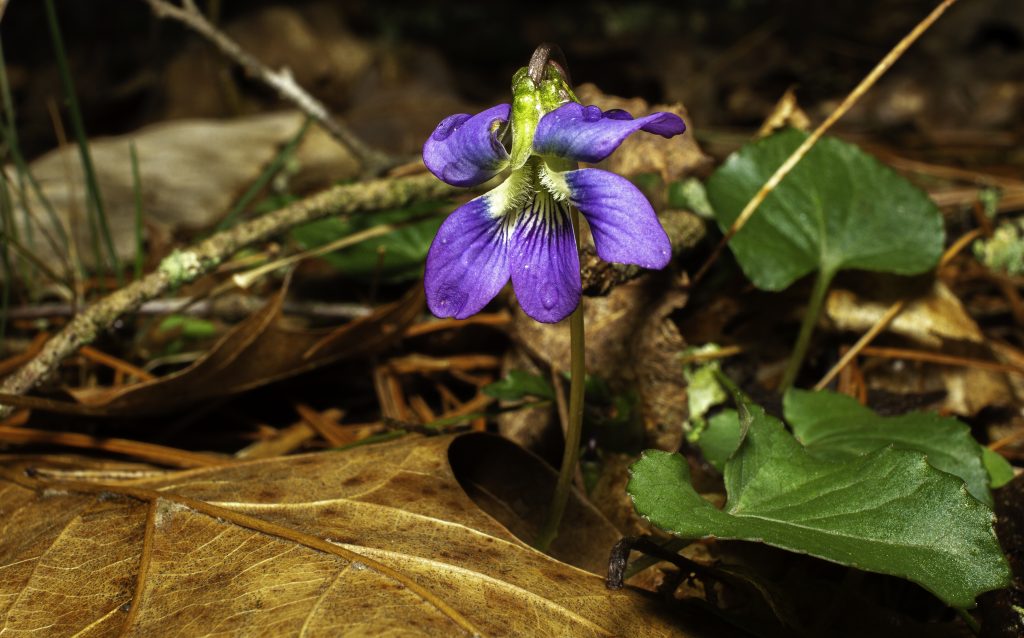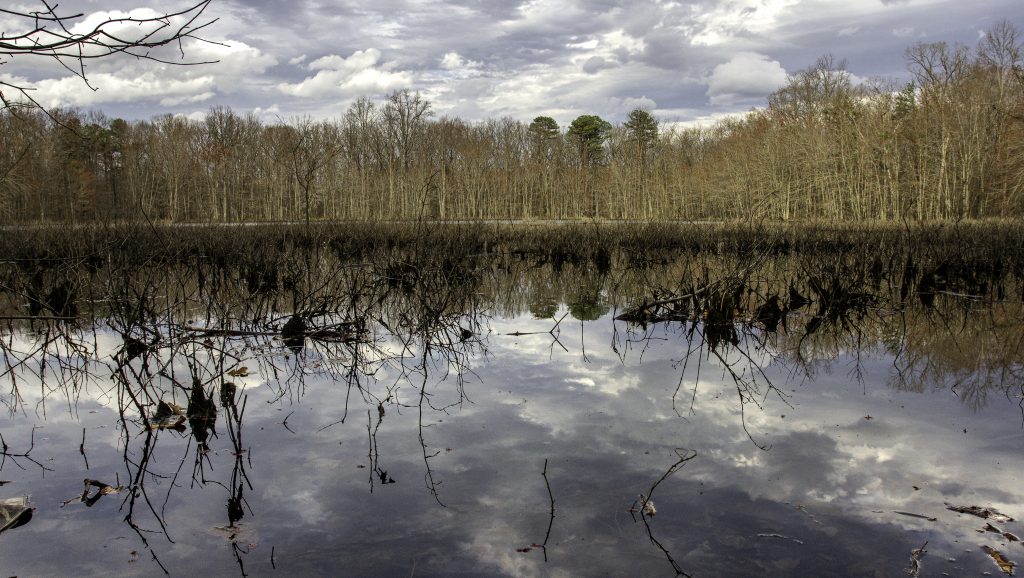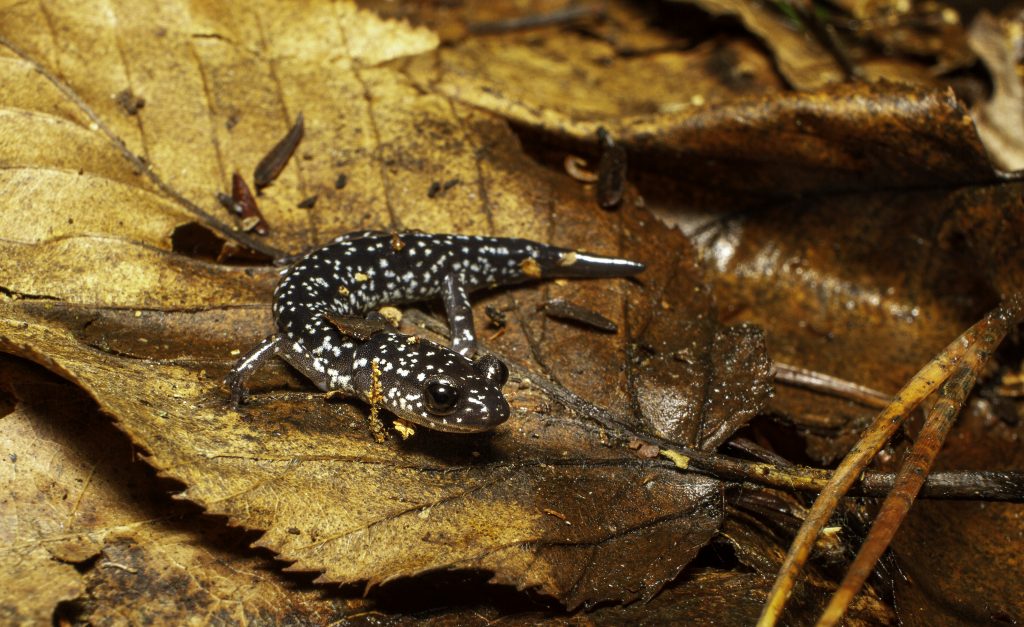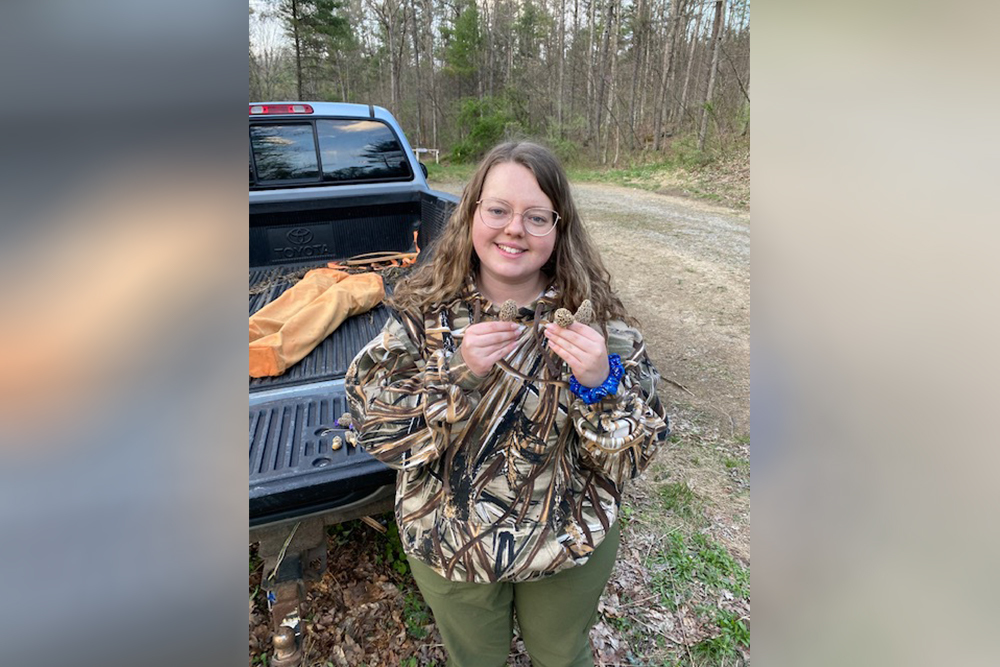“It’s the highlight of my day to hear students who daily recount the joy they find in now recognizing the animals, plants and rocks around them … In such unusual times, experiencing the beauty and complexity of the natural world together has been a unique source of hope for us.”
Professor Doug Graber Neufeld
For Professor Doug Graber Neufeld and his students in the “Natural History of the Shenandoah Valley” course, there is one small consolation to the loss of a full slate of exciting field trips when courses at Eastern Mennonite University abruptly moved online and students scattered to homes far away.
Spelunking.
“At least we got that in,” Neufeld said. “They really loved it.”
“I have never been before and I always love a good challenge,” said Morgan Pletch. “While it was beginner level, I still had a blast!”
“The caving was sort of out of my comfort zone,” said Katelyn Dean, “but I absolutely loved it. It was an experience I’ll never forget, of a different side of nature than I’ve ever seen before.”

That’s the kind of learning Neufeld loves to hear about. He waits the better part of two years to teach this course. It’s special in part because of the sheer variety of disciplines covered, but also the opportunity to take students out into the field. The shared experiences of birdwatching, caving, hiking, interacting with wildlife, searching for native wildflowers, and conducting fieldwork with biologists create a unique comraderie and strong bonds.
Pletch got that right away: She had taken Neufeld’s intro to biology class during the fall and jumped at the chance to take another class with him that also included so many field trips. The somewhat rare mix of older and younger students and lots of engaging experiences together meant “connecting with my peers on a level a student does not typically get in other classes.”
As they weather these times of loss and disruption, Neufeld says his students now experience the course in a different way. ”While we all keenly feel the disappointment of not being together in person, I think we’ve all come away from this year’s class with a unique understanding of how important nature is to our own mental and physical health.”

Naturalist John Muir, whose birthday is coming up the day before Earth Day, once said, “In every walk with nature, one receives far more than he seeks.”
The field assignments have continued in creative ways. Lab coordinator Brinton Domangue, who manages EMU’s greenhouse, supplied videos of a botany walk through the Bennett’s Run area in Bergton and the James Madison University Edith J. Carrier Arboretum. [Read more about Brinton’s love of plants in this profile.]
And the students continue to get out into nature — wherever is convenient and safe, Neufeld said. Sometimes that means a backyard. “We’re being pretty careful on what we suggest to them, telling them if it is safe to be at a local park or woods, that’s great, but not to take any risks with it.”

One day, Pletch spotted a sharp-skinned hawk in her driveway. She scrambled for a photo and shared it later (right).
A salamander hunt, a documentation exercise in a local woodland park of their choice, a birding expedition timed for spring migration — these journeys provide gifts of solitude and discovery.
Back home in Lancaster, Pennsylvania, Chelsea Brubaker says the class has given her a good reason to get outside and away from the computer she sits in front of “for hours at a time.” She has learned to identify more plants and tests her skills on a nearby rail trail, or at two favorite destinations further away: Chickie’s Rock County Park and the Clarence Shrock Park at Governor Dick.
Pletch says her go-to spot is Crockett Park near Warrenton in Fauquier County. In her first year of college studies as a biology major, the breadth of the class has broadened her horizons beyond established interests in human anatomy and physiology.
“I am so glad that I decided to take this class,” she said. “It has opened up interests that I didn’t even know I had.”

She’s thought about many possibilities for the future, from “teaching at the secondary level to becoming a physician or even continuing research at a higher level institution.” Figuring out “what I’m being called to do” is still part of her time at EMU.
Discovery in one’s backyard has also been a theme with Dean, a biology major from nearby Broadway. For the past five years, she and her dad spend time in the woods foraging for wild edibles.

It started with learning more about ramps, she said. “I was so intrigued with the fact that there are all of these edible mushrooms and plants out in the woods around us that people don’t really know about or pay attention to. And so, I researched information about where to look and what time they grow. I even listened to podcasts about people from other states finding them in their area.”
Dean shared in a recent class meeting the natural clues she uses to find morels, including looking for certain kinds of trees and waiting for signs like blooming wild violets and the height of mayapples. On a recent excursion, she was pleased to recognize even more species — wintergreen, hemlock and liverleaf flowers — that she had learned from class. And she and her dad spotted an American woodcock, a rare find.
Neufeld treasures hearing about these finds and says he’s already excited to teach the course again.
“It’s the highlight of my day to hear students who daily recount the joy they find in now recognizing the animals, plants and rocks around them,” he said. “I’m sure we’ll be sending each other pictures and accounts of our nature sightings well after the end of the semester. In such unusual times, experiencing the beauty and complexity of the natural world together has been a unique source of hope for us.”

Mr Neufeld not only have you taught my daughter new things but she has taught me about things I’ve overlooked in my past 35yrs of being an avid hunter now I’m looking at non animal species such as plants,reptiles,birds and so much more she has enjoyed your class and was excited about going on more trips.Your impact was exceptional beyond the student.
Mr. Dean – Thank you for your kind words. It’s a great delight for me to hear how you’ve enjoyed the course through your daughter’s experience! It has been my privilege to have her, and indeed all of the students, in this class.
Doug,
Have your students read L. J. Heatwole’s account of the formation of the Valley’s geomorphology?
I will send it as an attachment to an email
Harold
HH